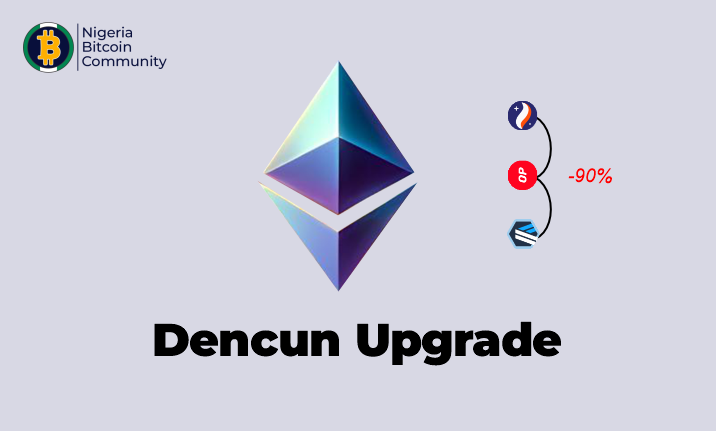The Ethereum blockchain underwent a significant milestone on March 13th, 2024 – the long-awaited Dencun upgrade.
Did you notice how fees on Ethereum’s L2 networks have significantly dropped? That’s thanks to Dencun!
This update tackles a major hurdle for Ethereum: transaction fees.
While there were several improvements in Dencun, the most important one is called EIP-4844, or “proto-danksharding” in simpler terms.
Learn what Dencun is all about and how it’s slashing L2 fees. Keep reading!
What is the Dencun Upgrade?
The Dencun upgrade is a set of improvements for the Ethereum blockchain aimed at addressing scalability issues.
It is the first significant upgrade after the “Merge”.
Dencun combines two internal upgrades:
- Cancun: An upgrade on the execution layer for improved transaction processing
- Deneb: Representing an upgrade on the consensus layer for improved network agreement.
In addition, the upgrade seeks to significantly lower transaction fees on L2s.
This is achieved by optimizing data storage on the Ethereum mainnet, making Layer 2 transactions more efficient.
EIP-4844: The Key Feature of The Dencun Upgrade
Decun brings several improvements, but one stands out: EIP-4844, also known as “Proto-Danksharding.”
Essentially, EIP-4844 introduces a novel concept called “blobs” which offers two benefits:
- A new method of data storage:
Before the upgrade, transactions on L2s are later stored permanently on the mainnet.
While this approach was important for security and dispute resolution, it puts a strain on the mainnet’s storage capacity, hindering scalability.
Post-upgrade – Enter blobs.
These are data fragments containing only the essential information needed for verifying L2 transactions.
Blobs offer temporary storage; they hold L2 data for a limited time (currently 18 days) and delete them automatically afterwards.
This approach allows for efficient L2 data storage, ultimately contributing to improved network scalability
- Significant fee reduction for Layer 2s:
Less data to store translates to lower costs for processing.
With the introduction of blobs, operational cost is reduced, leading to a substantial decrease in transaction fees for users.
Let’s see how the Dencun upgrade has affected fees.
Up to 90% Reduction on Layer 2 Fees!
The positive effects are already rippling through the L2 ecosystem.
Networks like Zksync and Starknet, and almost all L2s have reported drastic reductions in gas fees.
Before the Dencun upgrade, gas fees on L2 solutions like Starknet could occasionally reach up to $3 in situations with exceptionally high traffic on the Ethereum mainnet.
However, with the upgrade, the story is no longer the same.
A crypto influencer on X @Achilla_lens tweeted that Starknet fees have been reduced by up to 90%.
This table showcases how transaction fees have been reduced on several Layer 2 networks to as low as a fraction of a cent following the upgrade.
| ETH Layer 2s | Post-Dencun (Send ETH Fees) |
| zkSync Era | $0.13 |
| Starknet | $0.14 |
| Optimism | $0.37 |
| Arbitrum One | $0.5 |
| Polygon zKEVM | $0.57 |
| Loopring | $0.27 |
| Scroll | $0.06 |
It’s important to note that the Dencun upgrade only prioritizes optimizing Layer 2 solutions.
This means Ethereum mainnet gas fees haven’t shown a noticeable reduction yet.
Notwithstanding, the upgrade signifies a major step for the Ethereum ecosystem.
By improving the efficiency of L2s, the overall network can handle a larger transaction volume, ultimately reducing pressure and fees on the mainnet in the long run.
Conclusion
The Dencun upgrade is a big win for L2 projects and users.
Significantly lower transaction fees compared to the past are expected to encourage more activity within the L2 ecosystem.
Users will now be more likely to explore various L2-based DApps without being deterred by high fees.
What are your thoughts on the Dencun upgrade? Share your comments below!
Enjoyed the post? Share it with friends by clicking the ‘SM’ buttons.



0 Comments